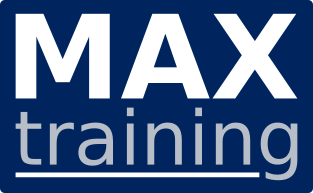Db2 for z/OS 13: Introduction to System Administration
Code: CV854GOverview
This course introduces the skills and knowledge required to administer a Db2 13 for z/OS system. Utilizing the lecture and a z/OS lab environment, learners will gain practical practice starting, stopping, and accessing Db2; examining the zParms and data sets; connecting to a Db2 subsystem via Data Studio; querying the catalog; exploring RACF; examining threads; working with DB2I; modifying Db2 active and archived logs; utilizing online utilities; monitoring and controlling Db2; recovering the catalog and directory; and using the administrative task scheduler.
Audience
This course is intended for z/OS system administrators, database administrators, or other technical individuals who will be managing Db2 13 for z/OS.
Prerequisites
Participants should have the following skills:
- A basic understanding of the objects (such as databases, table spaces, tables, indexes, etc) used in a Db2 subsystem
- Basic knowledge of SQL
- At least one year as a z/OS systems programmer or equivalent knowledge
OR
- At least one year as a Db2 for z/OS database administrator
Objective
- Start the Db2 subsystem using command syntax
- Identify and describe the function of the three required Db2 address spaces
- Describe the Db2 program preparation process, including precompilation, compilation, link editing, and binding steps
- Apply RACF commands to assign and manage access permissions for user groups
- Explain Trusted Contexts and Roles, then create and test them
- Check SYSADM authority and work with secondary authorization IDs and database privileges
- Explain Db2 program flow for all environments
- Run a Db2 program in a TSO batch environment
- Identify the steps involved in transaction processing and the purpose of the Db2 SIGNON protocol in CICS and IMS environments
- Explain the role and configuration of the CICS Db2 Attachment Facility in establishing connections between CICS and Db2 subsystems
- Explain the role of the Subsystem Member (SSM) in controlling Db2 connections within IMS environments
- Explain the characteristics and functionality of Distributed Data Facility (DDF) transactions in Db2 for z/OS, including their classification and usage with Workload Manager (WLM)
- Explain the role of the Db2 log in data recovery and system restart processes
- Explain the operation of the Db2 BACKUP SYSTEM utility, including system preparation, invocation of the DFSMShsm fast replication function and updating the BSDS
- Demonstrate the use of Db2 commands to monitor and control utilities and connections
- Describe the components and function of a Unit of Recovery (UR) in Db2, including the role of log RBSa and the process of back-chaining records for rollback
- Describe the phases of Db2 system restart following a system failure, including log initialization, current status rebuild, forward log recovery, and backward log recovery
- Execute a restart following a normal shutdown and an abnormal shutdown
- Explain how JDBC enables Java applications to access Db2 for z/OS
- Explain the synchronization process and command operations of the Db2 administrative task scheduler and the steps to start or stop the scheduler manually
Course Outline
Unit 1: Starting, Stopping, and Accessing Db2
Unit 2: Db2 Components and Processes
Unit 3: System Security
Unit 4: Db2 Authorization
Unit 5: Program Flow for All Environments
Unit 6: TSO and Batch Environments
Unit 7: Transaction Flow in IMS and CICS (optional)
Unit 8: CICS - Db2 Environment (optional)
Unit 9: IMS - Db2 Environment (optional)
Unit 10: Distributed - Db2 Environment
Unit 11: Logging
Unit 12: Db2 Utilities
Unit 13: Operations (Monitoring and Controlling Db2)
Unit 14: Recovery
Unit 15:System Recover / Restart
Unit 16: Java with Db2 (optional)
Unit 17: Administrative Task Scheduler (optional)
Price (ex. VAT)
Duration
Delivery methods
- Classroom
- On-site (at your location)
- Virtual (instructor online)
